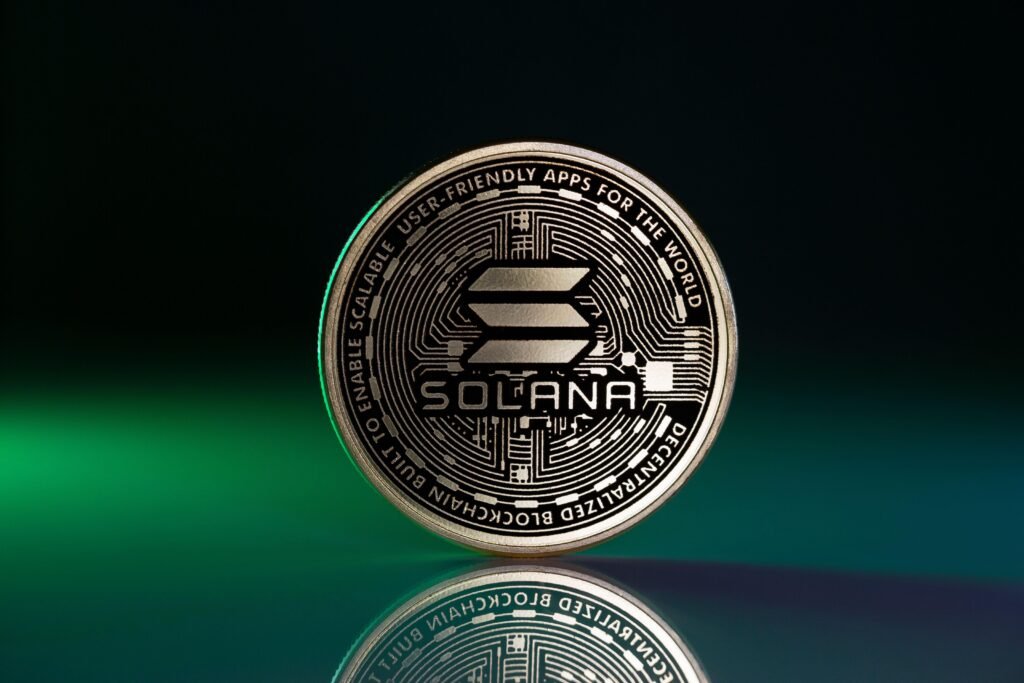Top 3 Cryptocurrencies to Buy in 2025: Market Value and Future Potential:
The cryptocurrency market is constantly evolving, with new projects and innovations emerging every day. As we approach 2025, several cryptocurrencies stand out as having long-term growth potential. In this article, we’ll explore the top 3 cryptocurrencies to buy in 2025, based on their current market value, use cases, technological advancements, and future outlook.
1. Bitcoin (BTC) – The Digital Gold

Market Value (as of January 2025): Bitcoin remains the largest cryptocurrency by market capitalization, valued at over $500 billion. Its dominance in the market is undeniable, with a current market share of around 40-45% of the entire crypto market.
Why Bitcoin?
Bitcoin, created by the anonymous person or group known as Satoshi Nakamoto, was the first-ever cryptocurrency and is often referred to as “digital gold.” It introduced the world to the concept of decentralized, peer-to-peer currency without the need for intermediaries like banks.
Key Factors for 2025:
- Store of Value: Bitcoin is increasingly seen as a hedge against inflation and economic instability. As traditional financial systems face challenges, many investors turn to Bitcoin as a safe-haven asset, similar to how gold is perceived.
- Institutional Adoption: Over the years, Bitcoin has gained significant institutional support. Major companies like Tesla, MicroStrategy, and Square have added Bitcoin to their balance sheets. This trend is likely to continue as more financial institutions and corporations embrace Bitcoin.
- Scarcity: With a total supply of 21 million BTC, Bitcoin’s scarcity gives it inherent value. As more institutional players and retail investors accumulate Bitcoin, the demand could drive its price higher.
Bitcoin’s proven track record, security, and increasing institutional interest position it as a solid investment for the long term.
2. Ethereum (ETH) – The Backbone of DeFi and dApps

Market Value (as of January 2025): Ethereum holds the second spot in market capitalization, valued at around $230 billion. It represents around 20-25% of the total cryptocurrency market.
Why Ethereum?
Launched in 2015 by Vitalik Buterin and a group of developers, Ethereum is a decentralized platform that allows developers to build and deploy smart contracts and decentralized applications (dApps). Ethereum’s blockchain is the foundation of the rapidly growing Decentralized Finance (DeFi) sector, as well as the NFT (Non-Fungible Token) ecosystem.
Key Factors for 2025:
- Ethereum 2.0 (Proof-of-Stake): Ethereum is undergoing a significant upgrade to Ethereum 2.0, which transitions from the energy-intensive Proof-of-Work (PoW) consensus mechanism to Proof-of-Stake (PoS). This upgrade will improve scalability, security, and reduce Ethereum’s energy consumption, making it more attractive to both users and developers.
- Dominance in DeFi and NFTs: Ethereum has a dominant position in the DeFi space, with most DeFi protocols built on its blockchain. Ethereum is also the primary platform for NFTs, with marketplaces like OpenSea running on the network. As these sectors grow, Ethereum’s value is expected to rise.
- Network Upgrades: Ethereum’s continuous development, including Layer-2 scaling solutions like Optimism and Arbitrum, ensures that the network can handle more transactions at lower costs, addressing some of the scalability issues that have plagued Ethereum in the past.
Ethereum’s versatility and leading position in decentralized technologies make it an essential cryptocurrency to watch in 2025.
3. Solana (SOL) – The Fast and Low-Cost Blockchain

Market Value (as of January 2025): Solana’s market capitalization is approximately $60 billion, with a market share of around 5-7%. It has seen significant growth over the past couple of years, largely due to its high throughput and low transaction costs.
Why Solana?
Launched in 2020 by Anatoly Yakovenko, Solana is a high-performance blockchain designed to support decentralized applications (dApps) and smart contracts. Solana is known for its incredibly fast transaction speeds (up to 65,000 transactions per second) and low fees (often less than $0.01 per transaction), making it a more scalable alternative to Ethereum.
Key Factors for 2025:
- Speed and Scalability: Solana’s key differentiator is its speed. It uses a unique Proof-of-History (PoH) consensus mechanism, allowing the network to process transactions faster than Ethereum. This makes Solana a strong competitor in industries requiring high throughput, such as gaming and decentralized finance (DeFi).
- Expanding Ecosystem: Solana’s ecosystem is rapidly expanding, with numerous projects, including decentralized exchanges (DEXs), NFT marketplaces, and lending protocols, migrating to the network due to its scalability and low transaction costs. As the ecosystem grows, so too could the demand for Solana’s native cryptocurrency, SOL.
- Developer and Community Support: Solana has attracted significant developer interest, with a large community building on its blockchain. The network’s developer-friendly tools and low-cost environment make it an attractive platform for creating innovative projects.
Given its fast growth, scalability, and increasing adoption, Solana could play a significant role in the future of blockchain technology and cryptocurrency.
Conclusion: A Look to 2025
As the cryptocurrency market matures, Bitcoin, Ethereum, and Solana represent three of the most promising investments for 2025. Each of these projects has a unique value proposition, from Bitcoin’s store of value and institutional adoption to Ethereum’s dominance in DeFi and NFTs, and Solana’s speed and scalability.
When considering any cryptocurrency investment, it’s important to conduct thorough research and assess your risk tolerance. Cryptocurrency markets are volatile and subject to significant fluctuations, so always approach your investments with caution and a long-term perspective. As we look ahead to 2025, these three cryptocurrencies are well-positioned to continue playing a central role in the digital economy.







